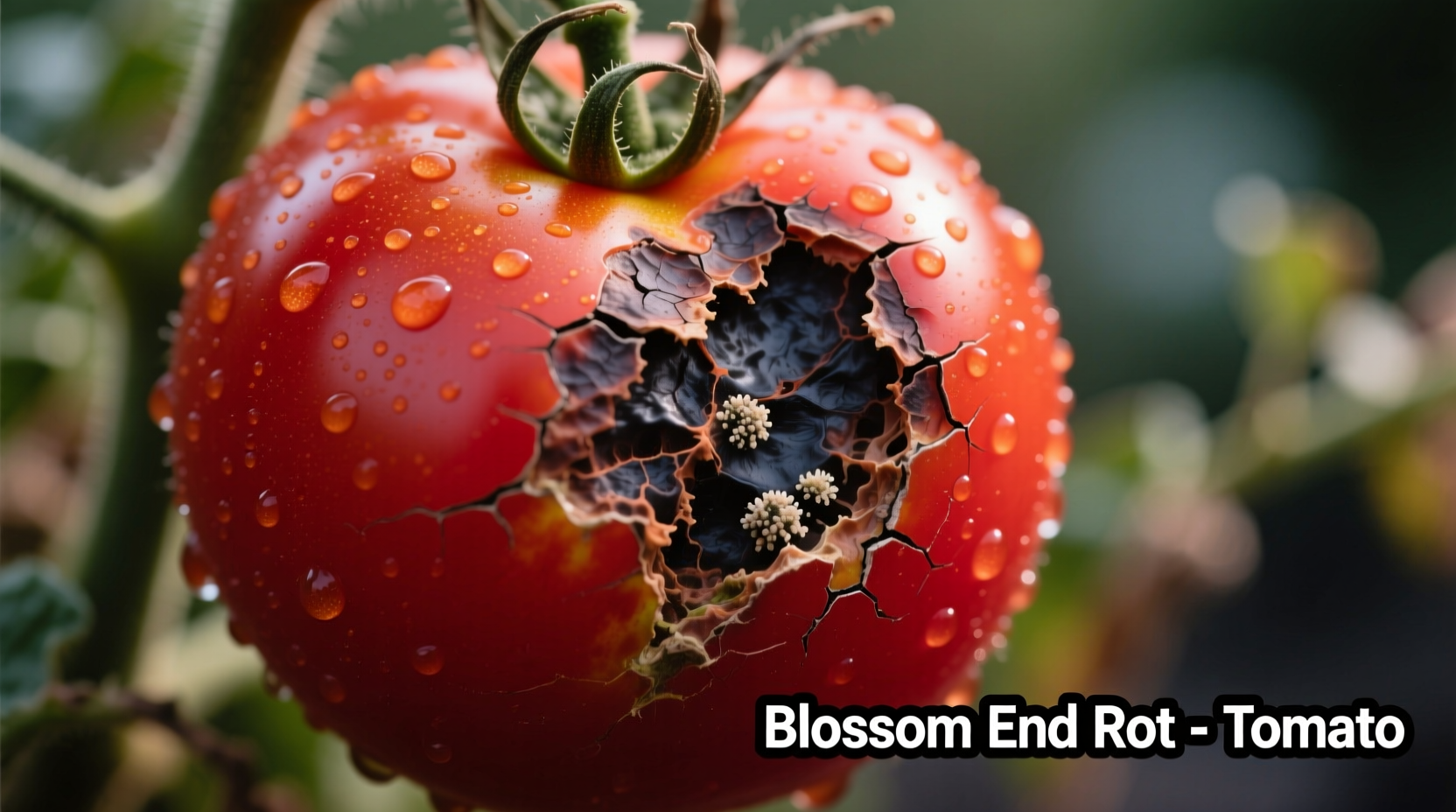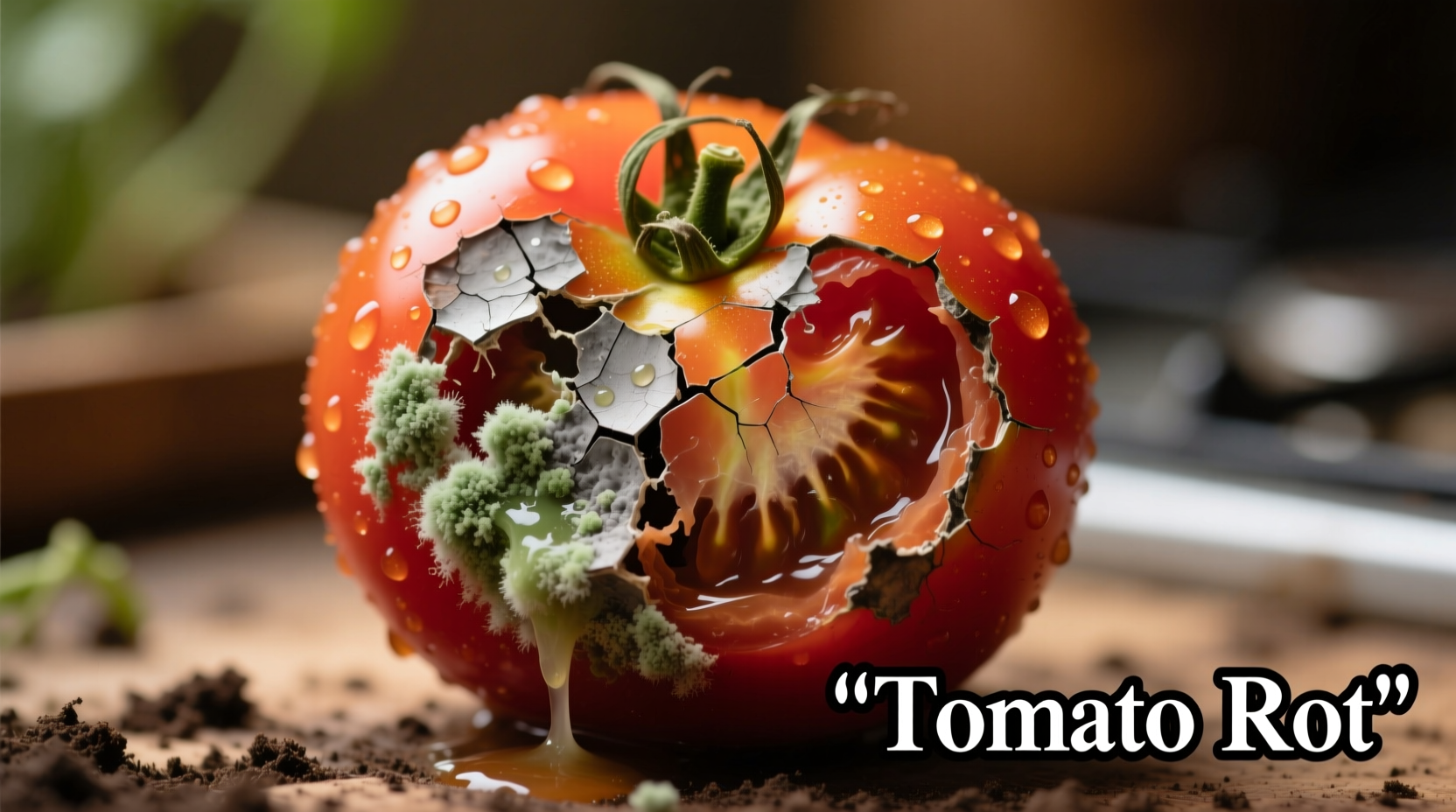Discovering rotten tomatoes on your plants can be frustrating after weeks of careful tending. Understanding exactly what type of rot you're dealing with—whether it's blossom end rot, fungal infections, or bacterial issues—is the critical first step toward saving your crop. This guide provides science-backed identification methods and practical solutions that work in real garden conditions, helping you diagnose the problem within minutes and implement effective treatments that prevent future outbreaks.
Identify Your Tomato Rot: The Visual Diagnosis System
Before treating tomato rot, you must correctly identify which type you're facing. Misdiagnosis leads to wasted effort and continued crop loss. Each rot type presents distinct visual markers that appear at specific growth stages.

Blossom End Rot: The Calcium Connection
This non-contagious condition appears as dark, sunken spots on the blossom end (bottom) of developing fruit. Despite common belief, the problem isn't necessarily calcium deficiency in your soil but rather the plant's inability to transport calcium properly. University of California Agriculture and Natural Resources confirms that inconsistent watering is the primary trigger—dry periods followed by heavy watering disrupt calcium uptake.
Fungal Rots: The Spreading Threat
Fungal diseases like anthracnose, early blight, and fusarium present differently:
- Anthracnose: Circular, sunken lesions that develop concentric rings
- Early blight: Target-like spots with concentric rings on older leaves first
- Fusarium wilt: Yellowing of lower leaves progressing upward with brown vascular streaks
| Rot Type | Key Visual Markers | When It Appears | Contagious? |
|---|---|---|---|
| Blossom End Rot | Dark, leathery spot on fruit bottom | Early fruit development | No |
| Anthracnose | Concentric ring pattern on fruit | Ripening stage | Yes |
| Early Blight | Target spots on leaves, stem lesions | Mature plants | Yes |
| Fusarium Wilt | Yellowing starting at leaf edges | Mid-season | Yes |
Why Your Prevention Methods Failed: The Hidden Triggers
Most gardeners miss these critical factors that undermine their rot prevention efforts:
Watering Patterns That Sabotage Calcium Uptake
Research from Cornell University's College of Agriculture and Life Sciences shows that fluctuating soil moisture levels—even over just 24 hours—disrupts calcium transport in tomato plants. The most effective watering strategy maintains consistent soil moisture at 60-70% field capacity. Drip irrigation systems outperform overhead watering by 37% in preventing blossom end rot according to field trials.
The pH Factor Most Gardeners Ignore
Soil pH significantly impacts nutrient availability. Tomatoes perform best in slightly acidic soil (pH 6.2-6.8). When pH rises above 7.0, calcium becomes less available even if present in sufficient quantities. A soil test revealing pH 7.5 explains why your calcium supplements aren't working.
Action Plan: Stop Tomato Rot in 48 Hours
Follow this time-sensitive protocol based on your diagnosis:
For Blossom End Rot (First 24 Hours)
- Remove all affected fruit immediately
- Apply calcium nitrate spray (4 level tablespoons per gallon) to foliage
- Install moisture meter to maintain consistent soil moisture
- Add 2 inches of organic mulch to regulate soil moisture
For Fungal Diseases (First 48 Hours)
- Remove and destroy infected leaves (do not compost)
- Apply copper fungicide according to label instructions
- Improve air circulation by pruning lower leaves
- Switch to morning watering to allow foliage to dry
Long-Term Prevention: The Proven Cultural Practices
Preventing tomato rot requires strategic planning before planting season begins. The University of Florida's Institute of Food and Agricultural Sciences recommends these evidence-based practices:
Soil Preparation Protocol
- Test soil pH 4-6 weeks before planting
- Incorporate 3-4 inches of compost to improve moisture retention
- Add gypsum (not lime) if calcium is needed without raising pH
- Rotate planting locations every 3 years to break disease cycles
Varietal Selection Strategy
Choose resistant varieties based on your region's common issues:
- Blossom end rot prone areas: 'Mountain Pride', 'Celebrity'
- Fusarium wilt risk: Look for 'FF' after variety name
- Verticillium wilt areas: Choose varieties marked 'VV'
- Humid climates: Select determinate varieties with better airflow
When to Discard: Food Safety Guidelines for Rotted Tomatoes
Not all rot makes tomatoes unsafe, but certain conditions require immediate disposal. According to USDA food safety guidelines:
- Blossom end rot: Cut away affected portion; remainder is safe to eat
- Fungal infections: Discard entire fruit—mycotoxins may penetrate
- Soft rot with foul odor: Compost only, never consume
- White mold growth: Discard immediately—potentially hazardous
Remember that surface mold on tomatoes indicates internal contamination. The FDA recommends discarding any tomato with more than 5% surface mold, as invisible mycelium has likely penetrated the entire fruit.











 浙公网安备
33010002000092号
浙公网安备
33010002000092号 浙B2-20120091-4
浙B2-20120091-4